Films That Discuss Communism
Because movies about politics > politics.
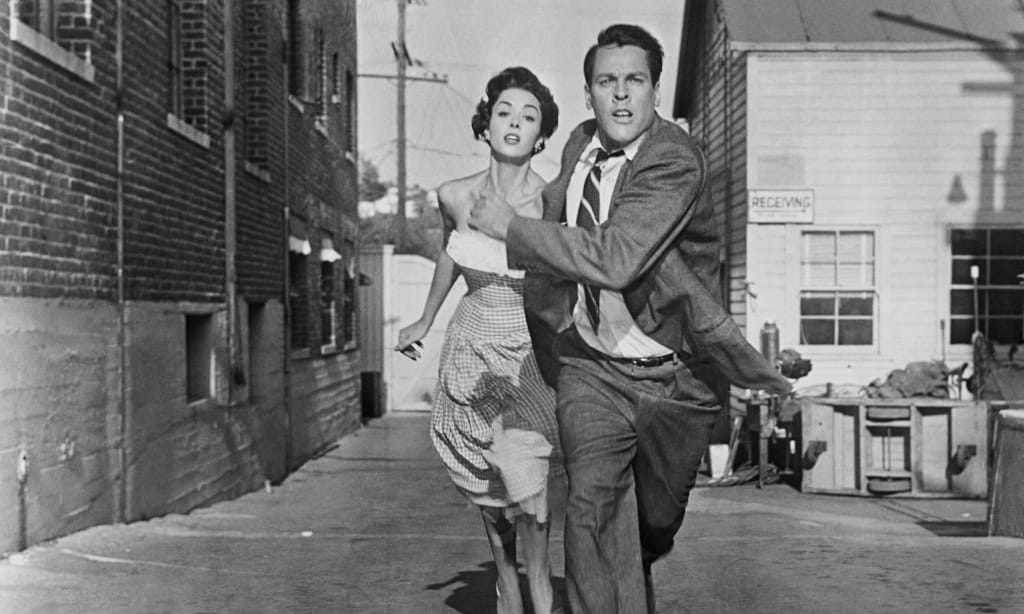
With all the political uproar shaping what Americans thought of communism, Hollywood reacted in the way it knew how to, and best: by producing movies. These films were made after the blacklisting of the Hollywood Ten, and were great examples of media that got Americans thinking about communism in a different light than before. Some examples include The Red Menace, Invasion of the Body Snatchers, The Man Who Knew Too Much, and North by Northwest.
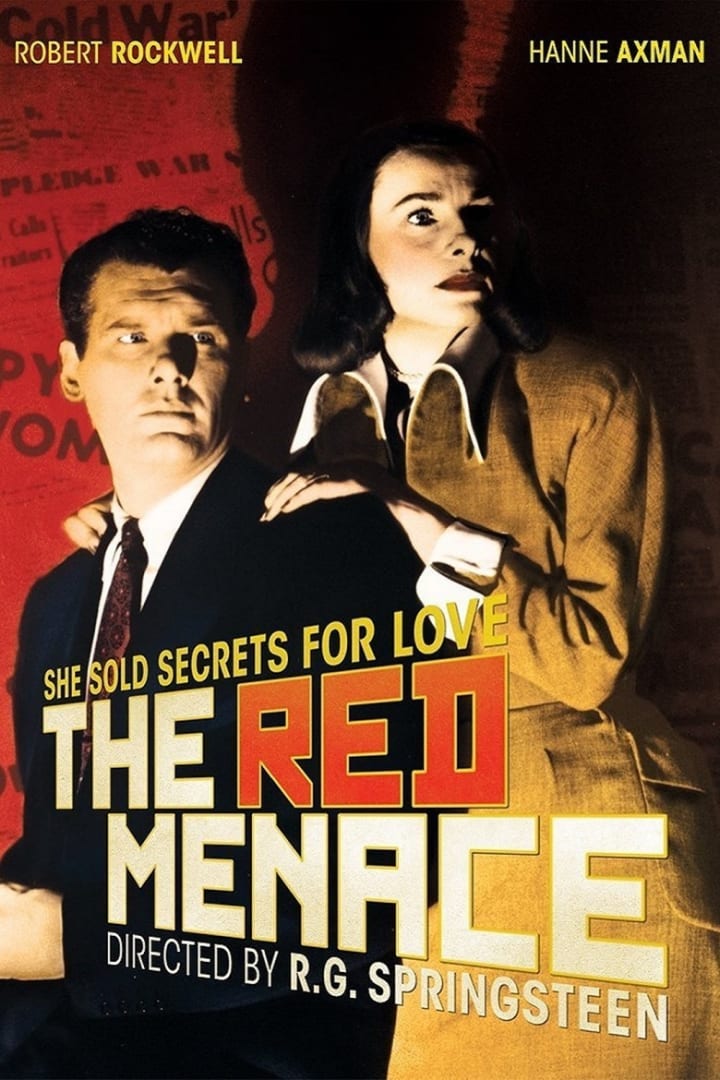
Courtesy of Republic Pictures
"The Red Menace"
One example of a film that highlights communism is The Red Menace (1949). This anti-communist film focuses on an ex-GI Bill Jones (Robert Rockwell) who falls in love with his instructor who trains him to become a member of the communist party. Ultimately, they are hunted by assassins after other members of the Communist party question their motives, and they agree with them. This movie was seen as a true dig at Russia’s government.
The Red Menace was one of the first Hollywood films to discuss communist conspiracy in the United States, and did so by showing communists as dangerous and malevolent. However, the film never showed them as truly malicious or a threat, as many of the communist theories were kept underground at the time.
The New York Times review of this film states “if the local comrades are as corny as they act in this film, then their only likely potential would seem to be to make us laugh ourselves to death”. Clearly, this film satirizes the fear Americans had for communists. Crowther goes on to say that “The most effective demonstration of charges against the Communists that the film provides is the disclosure of how the party allegedly abuses and intimidates those members who endeavor to break away.” This gives the film a valid sense, “but its credibility is diminished by the fustian representation of the leadership, played with villainous expressions by Lester Luther and Betty Lou Gerson.” Overall, the content of this film was effective in showing Americans how intense communism was in Russia, and other countries that supported this government.
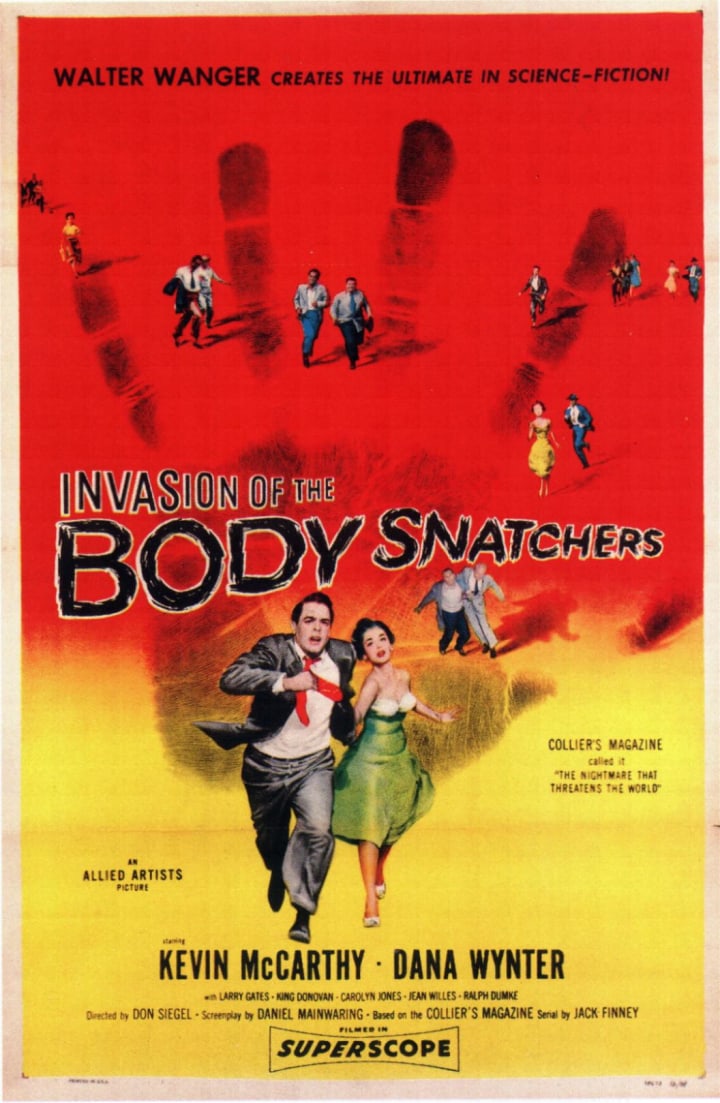
Courtesy of Allied Artist Pictures
"Invasion of the Body Snatchers"
UFOs and Science Fiction in the 1950s served as a good way to discuss communism in film. Metaphor to the fear and paranoia Americans had for McCarthyism. An excellent example of this is the film Invasion of the Body Snatchers (1955). Dr. Miles Bennell (Kevin McCarthy) gets prompted with several psychological ailments involving people who just are not “themselves” Through some investigation and doctor visits, Bennell finds out that his neighborhood is being replaced by alien doppelgangers. Chaos ensues complete with a black and white filter, cheesy suspense-inducing music, and.
New York Magazine states that the end of the film “was as effective in blunting the film's grim conclusion as giving a Band-Aid to a beheading victim; few films of the era make it more painfully clear that for these people (and maybe for ourselves), there's no turning back and no way home.”
Michael Dodd of The Missing Slate has called the movie "one of the most multifaceted horror films ever made." He states, "simultaneously exploiting the contemporary fear of infiltration by undesirable elements as well as a burgeoning concern over homeland totalitarianism in the wake of Senator Joseph McCarthy’s notorious communist witch hunt, it may be the clearest window into the American psyche that horror cinema has ever provided." There is so much content in the film that makes extremely clear connections to the communist takeover everyone feared.
The monsters featured were not really monsters at all; they were just eery duplicates of the supporting cast. Even so, they were not the main focus, as “the most important ‘monster’ was that social and psychological alienation of which Body Snatchers is the surpre representation. It was the perfect filmic manifestation of that ‘eerie conformity’” (Humphries, 2008). This conformity brings audiences back to the influence communism allegedly had on them, as communists demand conformity.
Dr. Hill states “Get on your radios and sound an all points alarm. Block all highways, stop all traffic, and call every law enforcement agency in the state” at the end of the film with a sense of urgency that many people felt as far as communism was concerned. The boys-snatching/invasion is referred to as “the epidemic of mass hysteria” several times in the film. This is a clear connection to communism. Dr. Bennell also states “They're here already! You're next! You're next, You're next...!” In moments of mass hysteria. This too closely refers to the communist influence that many American feared. These lines have lead many critics (myself included) to emphasize how communism is like these aliens, turning you into something inhuman.
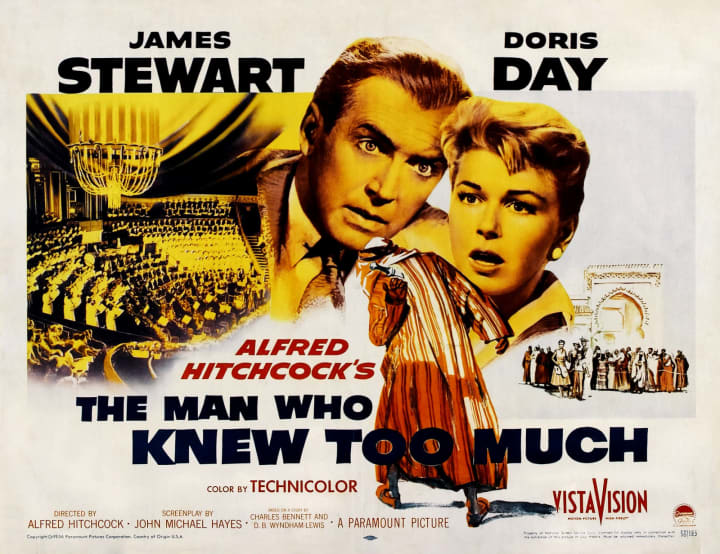
Courtesy of Paramount Pictures
"The Man Who Knew Too Much"
Alfred Hitchcock made two films that spoke to the communist undertone of America: The Man Who Knew Too Much and North by Northwest. Both were about spies, and although they did not directly deal with communism, they asserted the idea of people working undercover. Keeping secrets was a major theme, along with deception, as this is what many subservient Americans were thought to be doing at the time they were questioned.
In The Man Who Knew Too Much (1956), a family accidentally become part of an assassination plot while on vacation in Morocco, and conspirators do everything they can to prevent them from obstructing their grand plan. The film stars Jimmy Stewart and Doris Day as Dr. Benjamin and Josephine McKenna, respectively. This film was made in the period where Hitchcock was deemed the master of suspense. It is Hitchcock’s only remake (the original film was made in 1934) but this version shows much more of a grasp of the psychological thriller genre. The New York Times says that Hitchcock “virtually educated critics in the techniques and refinements of the ‘chase’”.
The idea of giving up names and information in order to save yourself, along with the ones you love, is exactly what the whole witch hunt was for those accused of spreading communist ideals. As stated above, Hitchcock refined the chase, which was reflective of the witch hunt that had previously been going on in America’s government and film industry. With Stewart and Day starring as starkly American characters, their efforts to remain true to American values despite outside forces also is similar to how Hollywood was so intent on keeping those ideals at the forefront.
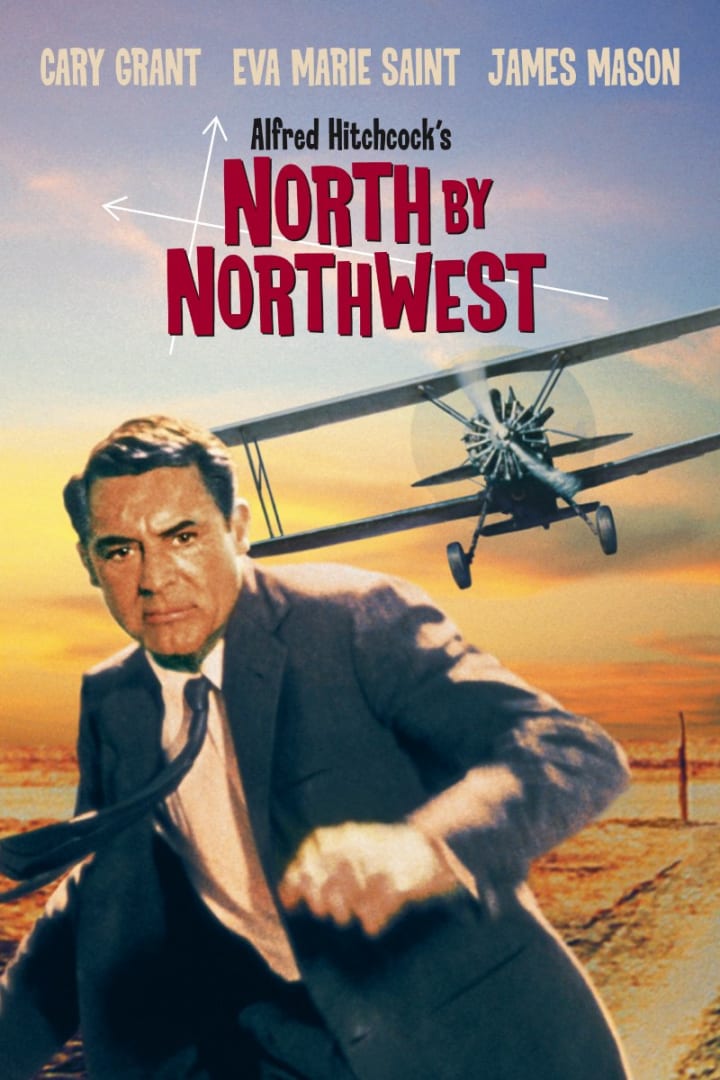
Courtesy of Metro-Goldwyn Mayer
"North by Northwest"
North By Northwest (1959) is lauded as one of the greatest films of all time, along with one of Hitchcock’s best. Even though it does not give off the darker and morbid tones as much as other Hitchcock films, North by Northwest is laced with themes of deception and moral relativism concerning the Cold War. According to the New York Times, North by Northwest is a colorful and exciting route for spies, counterspies and lovers,” which glorified the idea of Russian and American spies. It is also considered the prototype for James Bond films to come, since it has many similarities to the franchise: spies, a debonair hero, villians, and an ingenue.
The film stars Cary Grant and Eva Marie Saint. Roger Thornhill (Grant), a Manhattan ad executive, gets sucked into a world of spies (Saint) and counterspies, after being falsely identified for a government agent. Ultimately, he becomes a victim of circumstance and chased from New York all the way to South Dakota. His honesty sees him through to the end, along with exciting chase scenes and innuendos that were considered bold at the time.
The moral relativism of North by Northwest is significant, as across cultures and belief systems what is considered right and wrong varies. For example, what Russians and other communist countries consider normal, Americans may find outrageous. Despite Thornhill’s accusations, he remains grounded in his circumstances, even though others disagree and treat him accordingly. Thus, this motif works its way subtly into the film as far as the Red Scare was concerned.
The films made after Hollywood’s blacklisting were either very explicit or implicit in their communist motifs. Invasion of the Body Snatchers had no problem making direct connections, meanwhile North by Northwest took the route of a spy movie that relates more to the Cold War than anti-communism. Nonetheless, Hollywood’s reaction was appropriate and the film industry continues to weave politics into entertainment to this day.
About the Creator
Marina Caitlin Watts
Marina loves Frank Sinatra and hates decaf coffee. The native New Yorker and Cornell grad knows every word to "Ferris Bueller's Day Off" and thinks Shakespeare is cool. If you need her, she's waiting for Godot. Twitter: @marina_caitlin


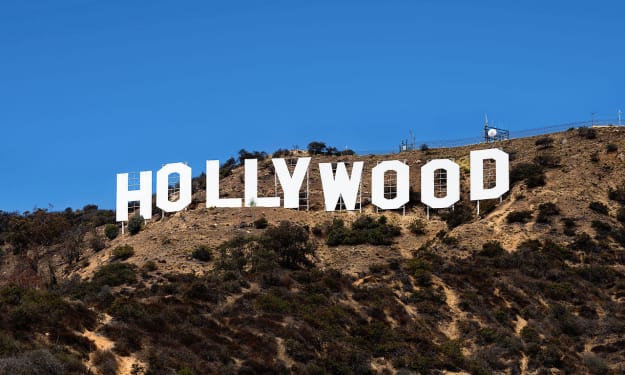



Comments
There are no comments for this story
Be the first to respond and start the conversation.